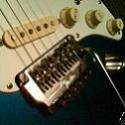|
Zuhzuhzombie!! posted:Yeah man, hook it up. Lemme see what you got. We have a '65 Tennessean, an old 225, a number of Epiphone broadways from the mid sixties, a '55 Gretsch Corvette (that I love), and some other stuff. There's also a very expensive '59 Les Paul Junior, if you have fifteen grand burning a hole in your pocket. I have a business meeting tonight, so I'll get some more information. Oh, and we're opening a shop in November. It's going to be focused entirely on vintage guitars, banjos, mandolins, and stringed instruments (violins, etc). Two luthiers with a lot of experience (they're both in their sixties), and myself, handling the internet side of things. We'll be opening with an inventory of around 75 vintage archtops, so that's good. I wanted to just do an internet based business, because operating a storefront is expensive, but these guys seem to want to have a space, so that's what we're doing.
|
|
|
|

|
| # ? May 9, 2024 09:44 |
|
Any other hollowbodies? Got my hands on that Gretsch Country Gent that I liked and, yup, hosed up neck heel is hosed up.
|
|
|
|
I shoved a matchstick in the screw hole and the wood is soft enough that I didn't even need glue or anything else. Bending the clip on the output jack and cleaning the metal a bit fixed any static or other problems with it. So between those two quick fixes I just avoided having to spend any money to get it back to playable. Now I just need to go and get a new set of strings for it.
|
|
|
|
Which three scales would you learn first if you were a beginner again? Which are most useful/common? Is it smarter to start by: a) learning scale X in one key, all positions on the fretboard or b) learning scale X in all keys, one position each?
|
|
|
|
I don't think I'd hate changing strings on floyds as much if unlocking my saddles on my very worn, rusty lopro wasn't as much of a pain
|
|
|
|
Pondex posted:Which three scales would you learn first if you were a beginner again? Which are most useful/common? Scales are not where I started my learning, but if I was to answer what scales I started with when I started scales, then: Diatonic major (Ionian) Diatonic natural minor (Aeolian) Minor pentatonic (add the blue note if you feel saucy) However, what I might say to anyone asking this question is: there is a way you could learn all of these things at once. And you would learn it subversively, without ever knowing it was a scale, set of scales, or full modal command UNTIL IT WAS TOO LATE.
|
|
|
|
Pondex posted:Which three scales would you learn first if you were a beginner again? Easy and simple to remember, plus it's an easier way of learning the intervals that comprise the Major scale, which is more important than learning a scale by rote on its own. Pondex posted:Is it smarter to start by: Learn what makes the C Major scale a C Major scale, then apply that knowledge to the D Major scale and so on.
|
|
|
|
Alleric posted:However, what I might say to anyone asking this question is: there is a way you could learn all of these things at once. And you would learn it subversively, without ever knowing it was a scale, set of scales, or full modal command UNTIL IT WAS TOO LATE. Well, spit it out, man.
|
|
|
|
Guitar is designed about moveable shapes and patterns, so you're probably best learning those shapes relative to a particular note (like where all the A notes are, and where each A major box pattern fits around those), learning how those patterns are made up of intervals (like one-fret semitone steps, or two-fret wholetone steps), learning how you can keep moving up a string into a new box or switch to the next string. Once you have a scale down, all over the fretboard, you can play it any key so long as you know the notes on the fretboard. Knowing the intervals and the different ways you can make those jumps actually helps you understand what you're doing, and opens up a ton of options and limits the amount of memorisation you need to do. It makes branching out into other scales like modes a lot easier as well. Wanna play Lydian? Sharpen all your 4ths, that's it. And if you start thinking about the actual notes you're playing, that's another level of understanding that will help you out later. A lot of people drill scales and box patterns in every key and whatever, and that's fine for kinda getting it automatically under your fingers (especially if speed is important to you), but I think the different patterns for each scale are more important than playing the exact same pattern with your hand in a slightly different position (i.e. playing in Bb instead of A). But don't just learn them rote. As far as important ones go... depends on the music you play, but the Minor Pentatonic, Major and Mixolydian will probably get you pretty drat far. But like I said, if you learn the basic scales and the intervals you're using, you can cut down on the work. Mixolydian is the Major scale with a flat 7th, i.e. the note before the root is a semitone lower, i.e. there's a two-fret gap which sounds less cheesy... you get the idea. It's all more about how and why it works than 'commit to memory this completely separate scale called the Mixolydian mode (and all its box patterns across the entire fretboard)' which is just silly and how I started out
|
|
|
|
baka kaba posted:It's all more about how and why it works than 'commit to memory this completely separate scale called the Mixolydian mode (and all its box patterns across the entire fretboard)' which is just silly and how I started out I still remember, specifically, the day and loving MOMENT that modes 'clicked' with me. Spent the rest of the day in a weird daze noodling up and down the neck.
|
|
|
|
Are there any cool guitar books you guys like that aren't just basic (or advanced for that matter) theory stuff, but like specific techniques or melodic theory or whatever I just bought Chris Letchford's (from a band i couldn't remember the name of until I started righting this sentence: Scale the Summit) book on tapping and I'm looking forward to going through it
|
|
|
|
iostream.h posted:Story of my fuckin' life right there. Yeah, it seems like the absolute worst way to do things as well, like music theory accountancy-style. Sure you could tabulate every possible combination of note positions and then learn them off by heart, but why would you want to? That's a lot of effort to keep a lot of meaningless note confetti in your memory. It's even worse when you start improvising a bit, because you come up with some cool sounding melody and someone asks 'hey what scale are you playing with there' and you have to go 'hell if I know' because you don't have a set of lookup tables to find the mode that coincides with the weird shapes you're using. Instead of being able to go 'oh it seems like it's basically C minor with these notes shifted a bit'. I remember downloading some page off the internet with a lot of different scales, all in different fonts and colours. An entire page of them, things like 'Neapolitan mode' and so on, but just a set of note names. Really fun to play and go 'ooo that sounds neat', but it ends up being kind of a trick you can whip out if you're lucky. You really want the sweet sweet recipes...
|
|
|
|
iostream.h posted:Raising the poles removes magnetic material out of the pickup, reducing lows which gives an apparently enhanced treble response. Well huh, I figured it'd be just like raising/lowering the pickups themselves. I'll play around with it on the hsp90 and I guess the bridge humbucker and see if it helps because it's still a bit darker than I'd like (as much as I don't want to change it too much as it at least stands out from my other guitars I suspect it'll struggle to cut through the mix without a lot of changes to my amp settings). Re modes and scales as much as I suck at them because learning them at this point is a pain in the rear end and I can generally get by going by ear to guess the interval I want, they're all just patterns of intervals and knowing which point in that is the root note. Even altering them is just counting from that note and remembering the unnecessarily silly way to say the change you made. Tbh though I feel like anyone asking about a scale instead of the notes should know it themselves when you show it to them slowly, at least that's what I tell myself as an excuse to be a lazy sack of poo poo. Nostalgic Pushead fucked around with this message at 02:39 on Sep 18, 2014 |
|
|
|
muike posted:Are there any cool guitar books you guys like that aren't just basic (or advanced for that matter) theory stuff, but like specific techniques or melodic theory or whatever
|
|
|
|
i'd like to find a book on slap technique applied to guitar that isn't written by a weirdo, because i'm assuming that's the only people that would write books on it
|
|
|
|
Hi guys am I in the right thread for guitar newb questions? My SO decided she wanted to pick up guitar so I got her a cheapy acoustic at the local guitar shop. She complained it was a little difficult to fret so we took it back to the shop and had them file down the bridge a little. Now that we've got it back home it's really buzzy. The E A and D strings buzz like loving crazy when you fret them. I tried playing it too and it's not just that she's not holding the strings down hard enough; it feels really hosed up. She took some pictures, can anybody diagnose the problem and give me an RCA? Note too that the guitar is strung lefty. http://imgur.com/a/yNxUO vvv It stops buzzing at about the 9th fret. Sade fucked around with this message at 04:39 on Sep 18, 2014 |
|
|
|
Probably just filed the bridge down too low, or the neck just isn't set right. It sounds like you either got a bad tech, the guitar is even shittier than you imagined, or some combination of the two. Does it stop buzzing or buzz more if you reach a high enough point on the neck?
|
|
|
|
Allen Wren posted:Well, spit it out, man. I have the first write up I did for the two gents I was tutoring at work. I'll look at it tomorrow and figure out if it's complete poo poo or not. I was writing literally as I was figuring this out for myself, so I was working things out only about a week or so before I was turning around and attempting to show it to someone else. I haven't looked at it in quite some time.
|
|
|
|
muike posted:i'd like to find a book on slap technique applied to guitar that isn't written by a weirdo, because i'm assuming that's the only people that would write books on it Just cover and emulate tosin abasi. quote:real as gently caress music theory truth bombs
|
|
|
|
I learned the 213 A chord method from justinguitar. Like everyone else said it is nice to have my index finger anchored on the G string which makes going from D to E chords quicker. Although I still find A to be a tough chord because I feel like I am trying to mash three fingers so close on the same fret and there never seems to be enough room.
|
|
|
|
Sade posted:Hi guys am I in the right thread for guitar newb questions? I'm not a huge expert but from the looks of it the nut hasn't been flipped in order to properly be strung lefty. Also the saddle thing too. Go yell at your guitar shop for being poo poo and see if they'll do a setup for free/discounted.
|
|
|
|
monolithburger posted:I'm not a huge expert but from the looks of it the nut hasn't been flipped in order to properly be strung lefty. Totally right, that bridge is not set properly for a lefty. The little offset bit should be on the second thinnest string, not the second fattest. The nut is also backwards based on the low E pretty much sitting on top of the thing instead of in any kind of saddle groove. Getting those two replaced with the lefty equivalent is gonna fix most of your problems. Also, I highly recommend folk strings (basically a ball-end nylon classical set) if she's having fretting problems. They're nice for beginners since less tension is needed, so they're easier on your hands. They have a bit of a different sound (and you don't usually use a pick), but they tend to be more mellow. Also, like four bucks or something, so it's not a serious investment if she hates them. I just pulled out my cheap old Cort again which has an old rear end folk set on it, and I forgot how nice it sounds and how good it feels. Ah, first guitars. Dewgy fucked around with this message at 06:58 on Sep 18, 2014 |
|
|
|
iostream.h posted:Raising pole pieces will increase clarity and airy 'chime' and thin the sound a bit. Lowering them will compress the sound somewhat, make it thicker and chunkier. I gave em a little tweaking yesterday, just lowered them a bit to get things a little darker and more compressed. They're weird pickups, at least in the casino. I've got P90s in my JMJM and they're touchy as well but the guitar isn't as dynamic and responsive as this one. I'll keep at them though, acoustically the guitar sounds amazing and even though I've got an area where I can't seem to get the buzzing to stop it plays so so so good with medium high action and flats. Last night I spent a while with the OR15 cranked walking around doing my best nugent feedback impression and holy poo poo does this thing let you wrangle it like crazy. I mostly bought this for clean work but it's too fun with high gain. This is the most lively, dynamic guitar I've owned.
|
|
|
|
FWIW, Jazzmaster pickups are NOT P90s. They look similar, but have some fairly significant design differences. They've got fewer windings than P90s for the same impedance, and the poles are individual magnets, rather than steel bars leading down into a unitary magnet as in a P90. These lead to a whole slew of differences in how they react dynamically, and the kind of sound and output you get.
|
|
|
|
Schpyder posted:FWIW, Jazzmaster pickups are NOT P90s. They look similar, but have some fairly significant design differences. They've got fewer windings than P90s for the same impedance, and the poles are individual magnets, rather than steel bars leading down into a unitary magnet as in a P90. These lead to a whole slew of differences in how they react dynamically, and the kind of sound and output you get. While true, the pickups in the JMJM are specifically P90 types in jazzmaster covers; slug magnets and all.
|
|
|
|
Since we are having P90 chat.... Does anyone nyone know if the Fender made "MP-90s' are just normal P90s or something else? Like the ones in the modern player Mustang.
|
|
|
|
monolithburger posted:I'm not a huge expert but from the looks of it the nut hasn't been flipped in order to properly be strung lefty. Will do, thanks to everyone for the advice! Will suggest folk strings too, as that's the kind of music she's wanting to play anyway.
|
|
|
|
yo anyone here ever have a JSX or play one?
|
|
|
|
Sade posted:Will do, thanks to everyone for the advice! Will suggest folk strings too, as that's the kind of music she's wanting to play anyway. just to clarify a bit, whenever you change a guitar from right to left handed, besides replacing the nut (not flipping it as most acoustic ones are one way deals), ideally you should replace the bridge and saddle to left handed ones. main reasoning for this is so your intonation won't be poo poo because the string length is different for each string because of the bridge saddle's angle. not nearly as important as fixing that nut though but don't expect your notes up the fret to sound in tune.
|
|
|
|
muike posted:yo anyone here ever have a JSX or play one? Yeah, what do you want to know? Short version is "like an XXX but ... very slightly different" to kick things off.
|
|
|
|
I've never had a chance to play a XXX or JSX in my local shops, so I'm just trying to get an idea of what people who use them like about them or dislike. I don't know how to characterize their sound or what its failings are. Anything that you think would help describe it to me would be useful.
|
|
|
|
Cheap JM pickups are, indeed, p90s.
|
|
|
|
Allen Wren posted:Well, spit it out, man. Al's Beginner Guitar Methodology: Foreward So I'll try to lay what I've structured down so far, but I haven't had the time to formalize it, edit it, all that good stuff. This is just going to be a massive brain dump. Some of this is going to seem silly over-simplistic, but this is very much a gestalt type launch into the guitar fretboard, and eventually into theory. First, I'll open with some theory discussion of very basic, very elemental things. After that, we'll turn to the fretboard, our fingers, and begin work there. Eventually it'll all mesh. Al's Beginner Guitar Methodology: Western Diatonic Theory Elementals Part 1: Notes, Tones, Pitches Discussion: A pitch is a pitch is a pitch. No two are alike, but two can be the same (we’ll get to that). Pitches have no context in and of themselves. They imply no tonality, no key. They are just a pitch. On the fretboard: Pick any string and pick it. Put your finger on any fret on that string and pick it. Those are pitches. Every open string has its own pitch, every fret+string has its own pitch. Sometimes, a fretted string can have the same pitch as another string, which is a special case called unison. Unison frets on a standard-tuning guitar occur on fret 5 of the E, A, D, and B strings. Playing the 5th fret on the E string makes the same pitch as the open A string. The same relationship exists between A-fret 5 and D, and then B-fret 5 and the high E string. The two exceptions are the G string, where because of the tuning relationship between the G string and B string causes the unison to happen on the G-fret 4, and then the high E string, which has no fret unison because there are no more higher strings. So what: This will become clear later, but understanding inherently where the unison frets are from root position implies the tuning nature of the guitar and bass guitar (as opposed to say, the banjo or cello which are quite different). The understanding of this tuning pattern will link to, and expand further topics. Part 2: Intervals Discussion: An interval is the distance between two pitches. That’s it. Their definition literally is never more complicated than that. What complicates things is how certain intervals are described. Interval descriptions are always given from the reference of an anchor pitch. Again, they are always referential descriptions. That means that they can apply to any pitch. The common names for intervals are as follows: Unison - both notes are the same note Minor Second - The two notes are one-half-step away from each other Major Second - The two notes are two-half-steps away from each other Minor Third - three-half-steps away Major Third - four-half-steps away Perfect Fourth - five-half-steps-away Minor Fifth - six-half-steps away Perfect Fifth - seven-half-steps away Minor Sixth - eight-half-steps away Major Sixth - nine-half-steps away Minor Seventh - ten-half-steps away Major Seventh - eleven-half-steps away (Perfect) Octave- twelve-half-steps away On the fretboard: First, look at a single string, it does not matter which. Let’s take low E. Having read tabs for ages, you are probably well-versed on the string-fret notation that they use. We’re now about to correlate to some of that. Anyway, the low E string… First, pick it totally open. There’s low E. Yay. Now fret the 12th fret and pick it again. Sounds like the same note right?... only an octave higher? Notice how any of that maps to the basic intervals I outlined? What does that inherently mean? It means that every fret on a given string is exactly one-half-step away (OR A MINOR SECOND) from the fret above it, or the fret/open string below it. The only two strings or string-frets that have no minor second relationship on both sides of them? Low E string and the last fret on your high E string. Those are the pitch range bounds of a standard-tune guitar. Go back to that open low E string again. Pick it open, now fret the 5th fret. You are now playing a Perfect Fourth above E. Based on our unison discussion from before, we know that at the 5th fret on this string, we should be playing the unison pitch of the next open string up. We know that string to be A, right? So what’s this mean? A is a Pefect Fourth above E. That holds true anywhere on the fretboard. Find an E anywhere, anywhere… and 5 frets up is A, a perfect fourth above E. Now go back to the open low E string again. Pick it open. Now, slowly, steadily, sequentially pick it open, and then fret 1, open, fret 2, open, fret 3, open, etc… all the way to fret 12. Do this several times, slowly, let the pitches ring, listen to how they sound against that low E, listen to the interval for the sound it generates. This ear training is actually quite essential. Use this exercise on other strings. Get the idea of how each of these intervals sounds in your head. So what: This is the baseline for how (western diatonic) music is built. Pitches alone are pitches, but the relationship of pitches to each other creates intervals, and those intervals have a character to our ears. Pitches beget intervals, beget triads, beget chords, beget harmonies… Knowing the elements gives you perspective on how these constructs relate to each other. It becomes your map of what’s going on in a piece. If you take the stack-of-half-steps-makes-an-interval thing and look hard enough at it and think for a second, you’ll notice that if you finger any arbitrary fret on that low E… and the same fret on the A above it… that’s a perfect fourth. Let’s say you were on the 5th fret. The E string is now playing A (a perfect fourth up from the open string, just for the record), the A string is now playing D (a perfect fourth up from the open A string). So now look at that the 5th fret on the A string (that D we’re playing)… what happens if we finger not on that 5th fret on the A string, but fret two-half-steps (or a major second) up from that pitch? Now play the new interval between the two strings. You’re now 5th fret on E string, and 7th fret on the A string, which is now an A and an… E… A up to E is a perfect 5th. What you’re playing is now what’s commonly referred to as a 2-string-power chord, every metalheads bread and butter. What’s that you say? That E up on the 7th fret of the A string should relate as an octave to the open E string? Yep. Here the low E string’s octave can be found on the next string, 7th fret. This works for the E, A, D and B strings. For the G string, you’ll have to bump up to the 8th fret on the B string. And, of course, the high E has no higher string to relate to. Al's Beginner Guitar Methodology: Fretting and Picking Exercises These are going to seem suuuuuuuuuuuuuuuuuuuuper boring, suuuuuuuuuuuuuuuuuuper tedious, but believe it or not are suuuuuuuuuuuuuuper important. This is the stuff I hammered away at for 3+ months before I did anything else. This is the stuff I do mindlessly while watching TV, sitting on the patio talking to the family, whatever. Work it with a metronome when you can, work it silently when you can't. Some players like to wrap their thumb, some don't. I do it in very specific spots. All of these exercises presume you are NOT wrapping your thumb, and that your thumb is in a neutral, relaxed position perpendicular to the neck approximately where your middle finger lies if you were to gently put your hand in position on the neck. If your hand moves, your thumb moves. Do not anchor your thumb so much that you crutch on it and find your mobility up and down the neck compromised later on (I did this and had to force myself to un-learn the behavior). 1. Minor second movement 1: Go to any fret on the low E and put your index finger on it. For bonus later-lesson-auto-reinforcement, I suggest fret 4 (G#). Fret E4 with your index finger, then fret E5 with your middle finger, then lift your middle finger, fret your middle finger. Alternate a few times. Chances are you're leaving your index finger mashed down on E4 constantly. Don't do that. Treat it more as a walking motion like when you were in gradschool and walked your fingers across your desk in social studies. When E5 is about to fret, E4 is unfretting and vice versa. Ok, now take your pick and on every E4 note, a downstroke, and ever E5 note, an upstroke. Go slowly, evenly, trying to time the attack of each pick stroke to where it arrives juuuuuuuuuuust as you fret. Try to let the notes ring out as long as you can; try to let there be no space between each note, as smooth of playing as you can. Once you get that down, we add the cross-string part of the exercise. Index finger will always fret 4, middle finger will always fret 5. Start on the low E and do the previous index-middle walk, and instead of going back down to E4 with your index finger, walk it to A4 on the next string over and execute the same index-middle walk there with the same downstroke-upstroke picking. The goal is to walk every string, 4th fret, 5th fret... index, middle.... downstroke, upstroke... across all 6 strings, as evenly, smoothly as you can. Standard issue practice rules apply: get it even and smooth, then work on getting it fast. 2,3,4,5,6,N... Take Minor second movement 1 and extrapolate it out for the rest of the finger/picking exercises: index-middle, downstroke-upstroke, walk the strings from low E to high E (minor 2nd) index-ring, downstroke-upstroke, walk the strings from low E to high E (major 2nd) index-pinky, downstroke-upstroke, walk the strings from low E to high E (minor 3rd) middle-ring, downstroke-upstroke, walk the strings from low E to high E (minor 2nd) middle-pinky, downstroke-upstroke, walk the strings from low E to high E (major 2nd) ring-pinky, downstroke-upstroke, walk the strings from low E to high E (minor 2nd) (this one suuuuuuuuuuuucks and will for a long, long time) These exercises are the elemental movements that we will build on later. The goal is for these movements to become reflexive, automatic, unthinking, unfeeling, first nature. Once you get the basic idea in your head, get the basic movments down, smooth, and are working on speed, add in the reversals: index-middle, down-up, low E to high E would turn into: middle-index, up-down, high E to low E Extrapolate out from there. For those that want to, work on these for this week and I'll get the next part written up.
|
|
|
|
muike posted:I've never had a chance to play a XXX or JSX in my local shops, so I'm just trying to get an idea of what people who use them like about them or dislike. I don't know how to characterize their sound or what its failings are. Anything that you think would help describe it to me would be useful. Hm, I'm one of the few people I know who actually likes the way the XXX sounds live - it's definitely got its own thing going on, it tracks about as well as a Triple Rec (so prepare to make room in the mix but also prepare for it to sound really heavy). I liked the JSX better, as it's just a tad smoother. The most common complaint people have about the XXX (and by extension, the JSX, though it's not totally identical) is that it's fizzy. And, yeah, it kinda is. Sound really works for some stuff, not so great for others; of the two, the JSX has a marginally better clean channel and I remember it being marketed toward taking pedals well for the kind of amp that it is. I personally feel like if you've got a JSX and you're using anything more than a light OD you're going to be in deep mud country but I'm not Joe Satriani. Some people gripe about the active EQs on them because they can add some hiss. Read this post on Peavey's forums for some info on a production problem that affected the noise gate built into the amp on some early units. It sucked. Also, build quality was a bit spotty on the JSX, less so on the XXX? Weird, but my experience and a lot of other folks seem to agree (but these are online reviews we're talking about, too).
|
|
|
|
The XXX is one of those overlooked amps like the Carvin MTS that doesn't reinvent the wheel but is a solid cheap workhorse
|
|
|
|
The active EQ is really useful for tweaking some very interesting tones. I wish I could find someone around here who could fix up my old xxx efx combo. It got me through quite a few years when I was starting out. Not even sure I'd still want to part with it as planned once it's in working order honestly.
|
|
|
|
Speaking of Justinguitar, is his paid content a good value? I've been enjoying his intermediate method and I'm tempted to buy the DVD set.
|
|
|
|
Hey, I like this a lot, it looks like something I would write (theory that is simple/practical as it relates to the guitar). Only thing I would like to add to this, although I know it may be boring, but it is totally worth it to spend maybe 10-15 minutes on the MusicTheory.net interval and chord trainer and see how you like it, hopefully turning it into a daily thing for a few weeks. Get to the point where you can sing (or at least try to, even if you can't hit pitch perfectly like a professional singer, you at least "know" what pitch you were going for) the intervals. Then, find out how to play said intervals on the guitar. You'll notice there are many different ways to play say, a minor second interval, from any position on the guitar. You can look them all up online, yes, or you can just use your ears (more difficult generally equals more rewarding). There are only 12 different intervals, so it's totally doable within a few weeks time. It helps you play by ear tremendously to learn these, to the point where you can write out tabs from your head without consulting the instrument whatsoever. (Think about how that can help with your compositions!) coolbian57 fucked around with this message at 03:56 on Sep 19, 2014 |
|
|
|
DarthJeebus posted:Speaking of Justinguitar, is his paid content a good value? I've been enjoying his intermediate method and I'm tempted to buy the DVD set. In my opinion, I love justin guitar, but I would not get the paid content. I don't have it, so I obviously can't give a review on it, but if you are starting to get to the intermediate level, I would recommend simply writing some of your own lessons. I think you will find this helps a lot more than most video lessons. Pick a key/mode that sounds interesting to you, find the scale diagram online and copy it really big to a piece of paper (by hand), and then write out 3-4 finger exercises or etudes, in tabs, using the scale diagram of said mode. Focus on finger exercises that you know you need work on (ie. if you are having trouble with barre chords, maybe write a barre chord exercise). This is nice composition (music writing) practice as well as will be beneficial to your technique after you practice the exercises and master them. As for online video lessons, they are great too, but don't corner yourself to one person. Also check out Andrew Wasson, I think you will enjoy him. He can be a little dry, but offers detailed and extensive 30 minute lessons, for free, on YouTube, that feature full tabs and musical backing tracks. Yes, I know it's insane to do for free, but he does it and comes out with new videos like every week. https://www.youtube.com/watch?v=qoQHxMMEDvQ. coolbian57 fucked around with this message at 04:13 on Sep 19, 2014 |
|
|
|

|
| # ? May 9, 2024 09:44 |
|
I'm re-wiring one of my guitars. Two pickups, two slider DPDT pickup selector switches, single volume/single tone. I've replaced both pots with Push/Push DPDT switches, but their functionality is being taken up by series/parallel and phase switching between the coils of the bridge humbucker alone. I would still like to try and wire it up to have the option for series/parallel between the neck and bridge pickups though, while retaining neck/bridge/both selection capability, and the only way I've been able to theoretically make it work (given that I can't add more switches) is outlined in this diagram: I've been racking my brain for hours trying to come up with a solution to this problem, but I can't quite wrap my head around it. It's a bit too complex. I don't see why it couldn't be done, but it's beyond my comprehension level. If anyone here knows what I'm trying to do and could help me through this, or could point me in the direction of a diagram that outlines basically the same thing, I would greatly appreciate it, because this is me right now: XYZAB fucked around with this message at 10:29 on Sep 19, 2014 |
|
|































